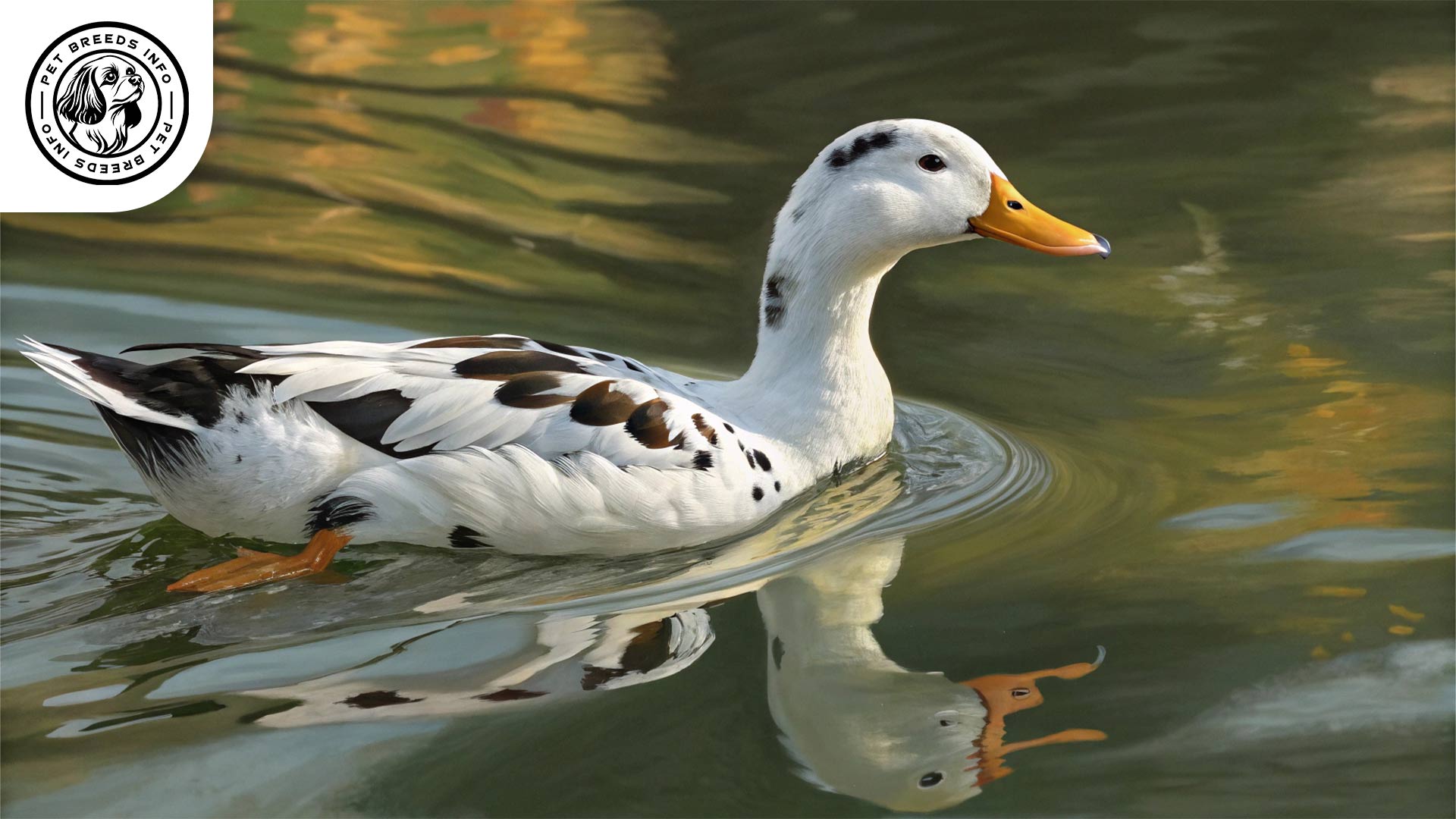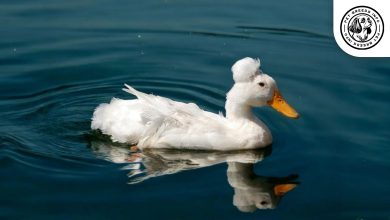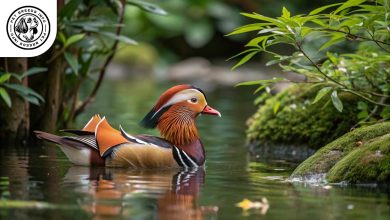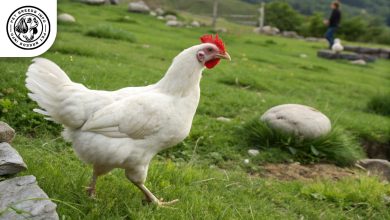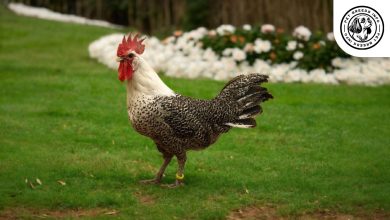Ancona Duck Breed: Personality, Lifespan, Food & Care
General Introduction of the Breed
The Ancona Duck is a domesticated duck breed known for its distinctive mottled plumage. Developed in the United States, this breed is believed to have emerged in the early 20th century. Although its precise origin remains unclear, it is thought to have descended from the Magpie Duck and other utility breeds.
Ancona Ducks are prized for their excellent egg-laying ability, hardy nature, and friendly temperament. This breed is a great choice for both backyard farmers and those looking for a docile and productive pet bird.
Table of Contents
| Common Name | Ancona Duck |
| Scientific Name | Anas platyrhynchos domesticus |
| Origin | United States |
| Size | Medium (6–7 lbs) |
| Lifespan | 8–12 years |
| Colors | Mottled black, blue, chocolate, silver, lavender with white |
| Talking Ability | Low |
| Noise Level | Moderate |
| Social Behavior | Friendly, social with humans & birds |
Physical Characteristics
Ancona Ducks are medium-sized, weighing between 6 to 7 pounds (2.7 to 3.2 kg) for both males and females. They have an upright posture and a well-proportioned body.
Their plumage features irregular patches of white mixed with black, blue, chocolate, silver, or lavender. No two Ancona Ducks have the same pattern, making each bird unique. They have deep-colored eyes, usually dark brown or black.
Their beaks and legs can range from orange to spotted black. Ancona Ducks have a broad, slightly convex bill and strong webbed feet, which help them adapt well to various environments.
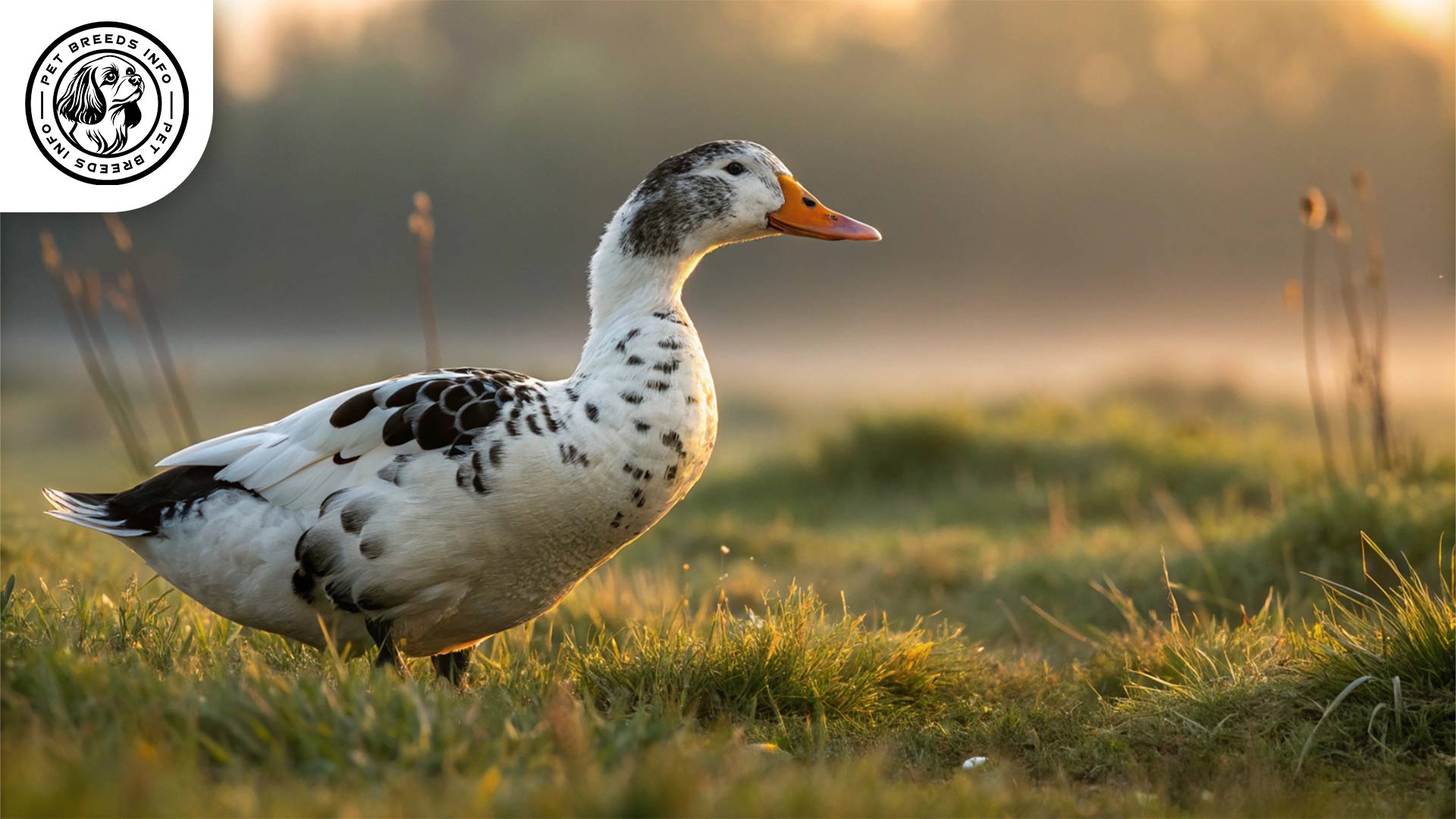
Personality and Temperament
Ancona Ducks are known for their calm and friendly temperament. They are intelligent birds that can easily recognize their owners and interact well with humans.
They are energetic but not overly active, making them adaptable to both free-ranging and enclosed environments. While affectionate, they remain independent enough to forage and entertain themselves.
The breed is sociable, making it good for households with children and other poultry. Ancona Ducks enjoy exploring and can be playful in nature, often dabbling in water and foraging for food.
Care and Maintenance Requirements
Ancona Ducks need a spacious area with access to water, such as a pond or kiddie pool, for swimming and preening. They require secure housing with proper ventilation and predator protection.
Grooming needs are minimal since ducks regularly clean their own feathers. However, owners should provide a clean environment to prevent infections. Regularly inspecting their feet and trimming overgrown nails is beneficial.
This breed is hardy and adapts to different weather conditions but prefers moderate climates. Adequate shelter should be provided during extreme cold or heat.
Read More: Ancona Chicken Bird
Diet and Nutrition
Ancona Ducks thrive on a combination of high-quality duck feed, grains, vegetables, and protein sources like mealworms. A balanced diet plays a crucial role in their egg production and overall health.
They should have access to fresh drinking water at all times. Foods to avoid include processed snacks, salty foods, and toxic plants such as onions and chocolate.
Adult ducks typically require two meals per day, but free-ranging ducks will supplement their diet by foraging for insects, snails, and plants.
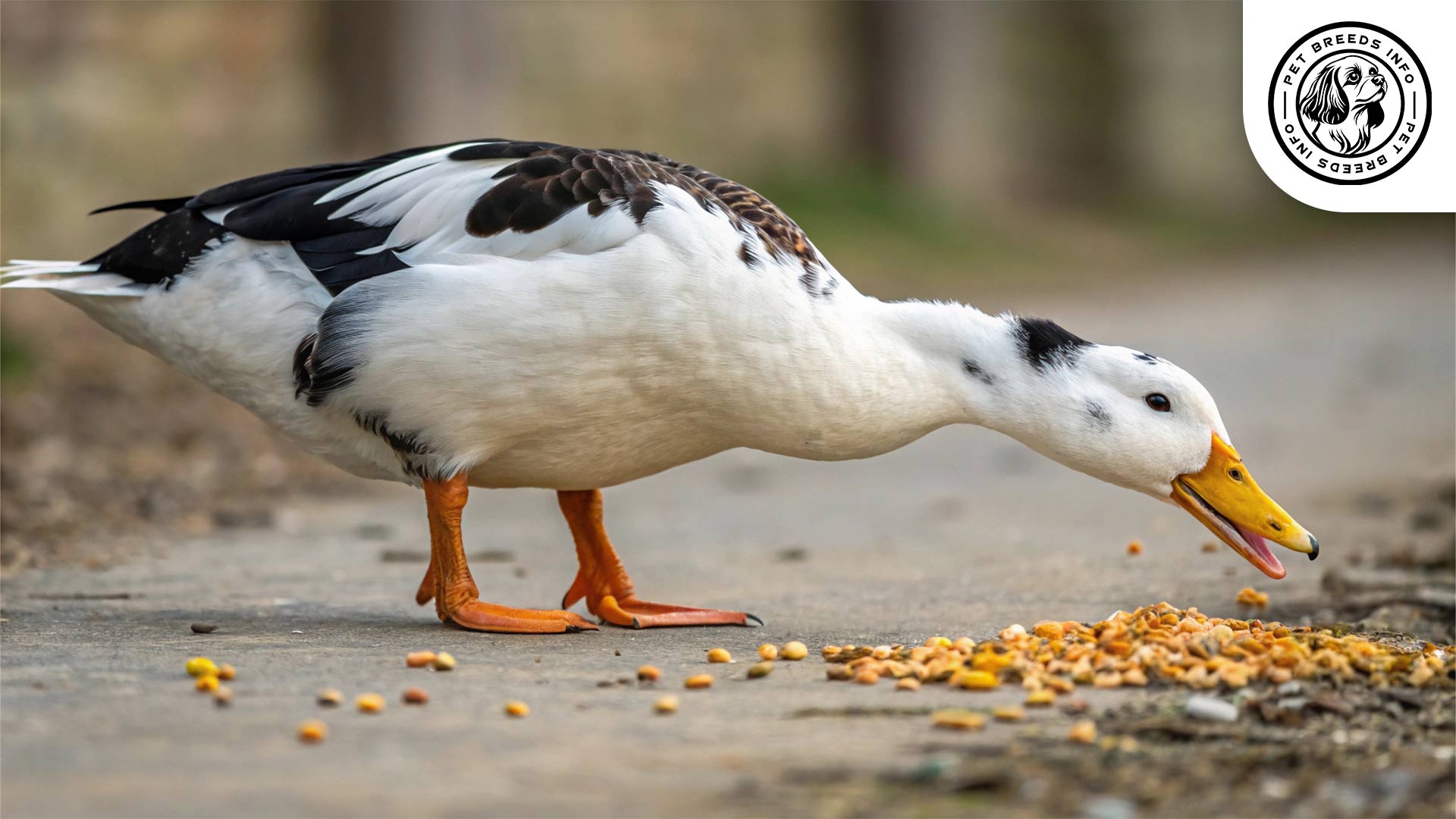
Health and Common Medical Issues
Ancona Ducks are generally healthy and resilient with few genetic health problems. However, they can be prone to leg issues if raised on hard surfaces for extended periods.
Regular deworming, vaccinations, and parasite control help maintain their well-being. Keeping their enclosure clean minimizes the risk of infections.
The average lifespan of Ancona Ducks is between 8 to 12 years, depending on diet, care, and living conditions.
Training and Behavior Management
While ducks cannot be trained like dogs, they can be conditioned to recognize feeding times and respond to their owners. Providing consistent routines and positive reinforcement helps build trust.
Young ducks benefit from early socialization, ensuring they grow into well-adjusted adults. Hand-raised Ancona Ducks tend to be tamer and more comfortable around humans.
Read More: Albino Budgerigar Bird
Interaction with Other Animals and Humans
Ancona Ducks interact well with children, provided they are handled gently. Their docile nature makes them suitable for families and backyard farms.
They get along with other ducks and poultry, especially when raised together. However, care should be taken when introducing them to aggressive or overly dominant animals.
Due to their friendly personality, they develop a bond with their owners but retain their independence, making them relatively easy to care for.
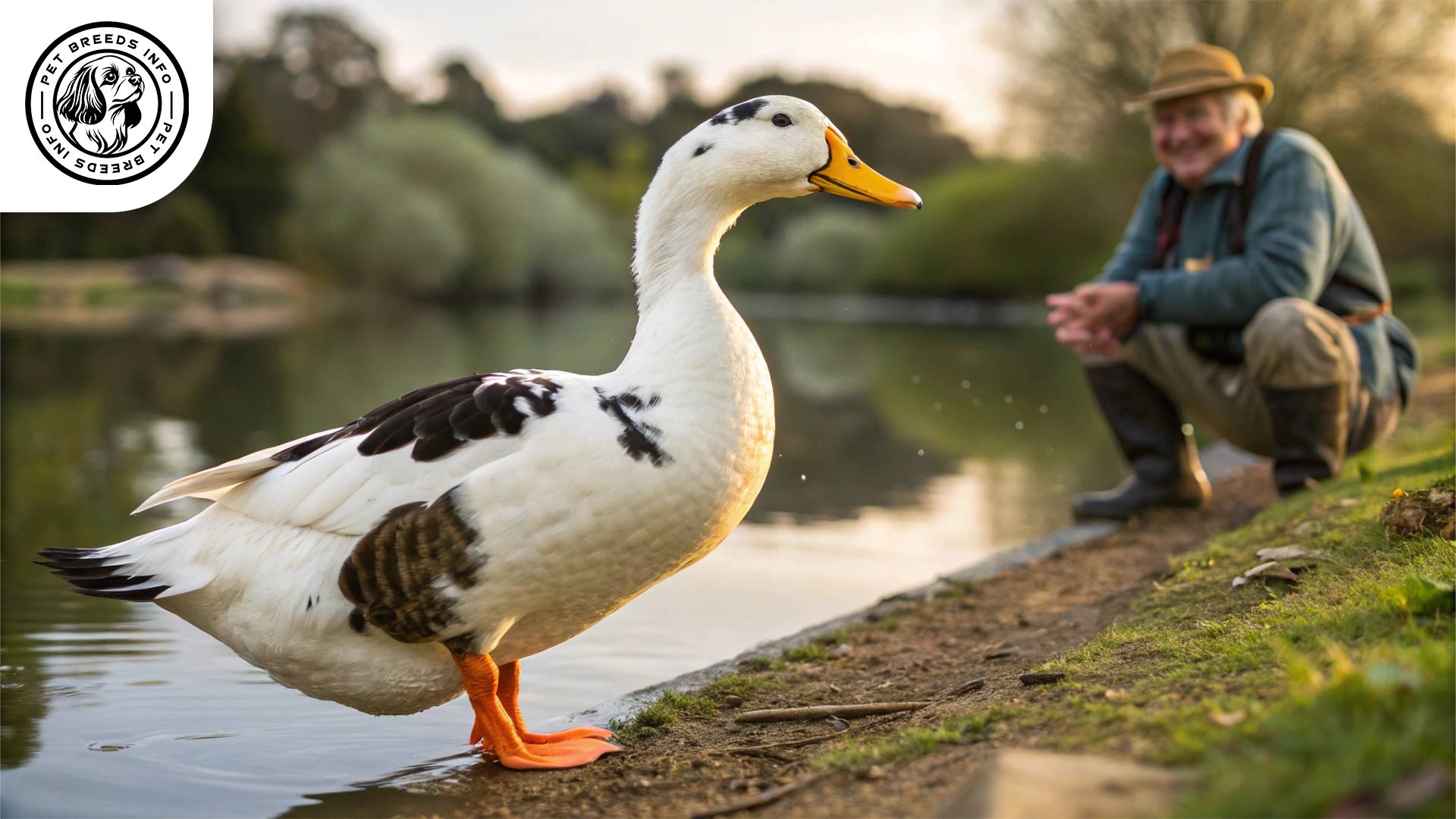
Price and Availability
The cost of Ancona Ducks varies based on location and breeder, ranging from $10 to $25 per duckling and $30 to $50 for adults.
When purchasing Ancona Ducks, it is essential to seek reputable breeders or hatcheries that focus on maintaining the breed’s health and quality.
Adopting from local farms or poultry rescues may also be an option, especially for those looking to provide a home for ducks in need.
Conclusion and Final Thoughts
The Ancona Duck is an excellent choice for those seeking a friendly, productive, and easy-to-care-for breed. Ideal for small farms and backyard setups, they provide plenty of eggs and companionship.
These ducks thrive in environments with ample space and access to water, making them best suited for rural or suburban settings. Potential owners should ensure they can meet their housing and dietary needs before bringing them home.
Read More: Albino Cockatiel Bird
With proper care, Ancona Ducks can live long, healthy lives, rewarding their owners with their unique appearance, sweet demeanor, and valuable egg production.
FAQ
Are Ancona Ducks good egg layers?
Yes, Ancona Ducks are excellent layers and can produce a high number of eggs annually, often around 210–280 eggs per year.
Are Ancona Ducks friendly and safe around children?
Absolutely. They are known for their calm, gentle nature and do well in family settings when treated respectfully.
Do Ancona Ducks need a pond?
While a pond is not necessary, they benefit greatly from having access to water such as a kiddie pool for swimming and grooming.
Can they live in cold climates?
Yes, Ancona Ducks are hardy and can adapt to various climates, but they still require adequate shelter during extreme weather.
